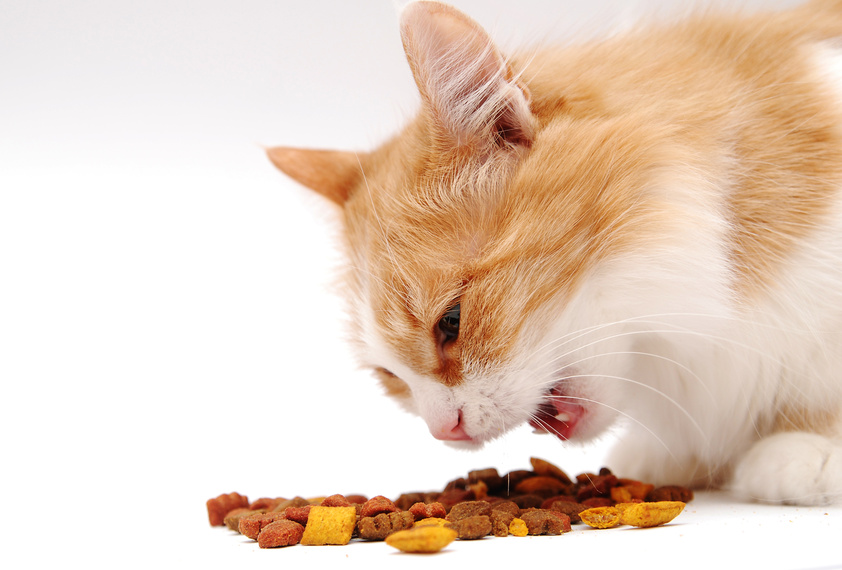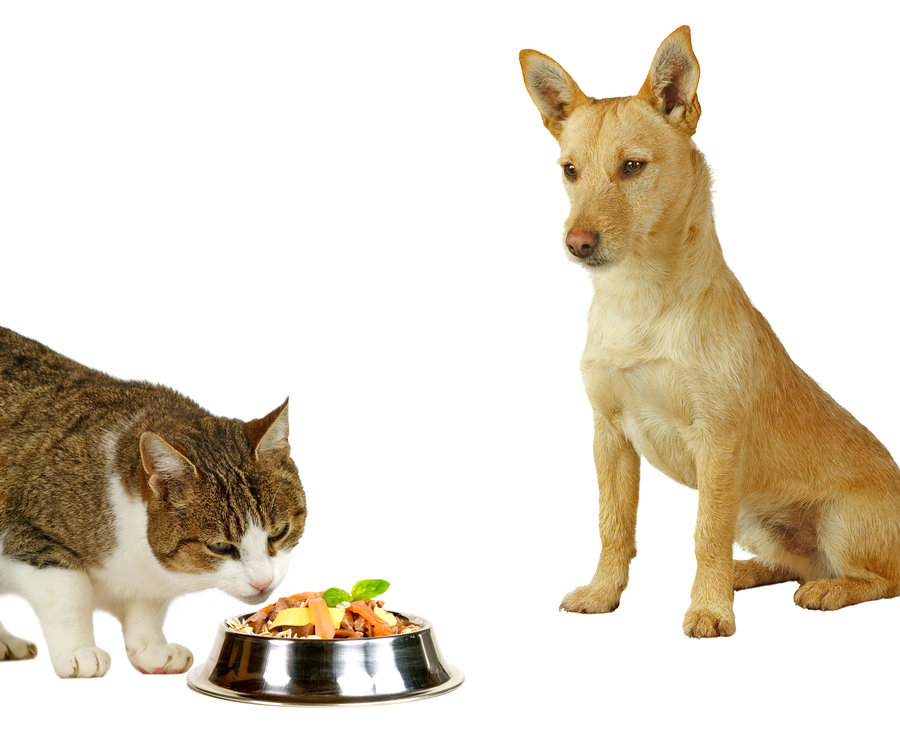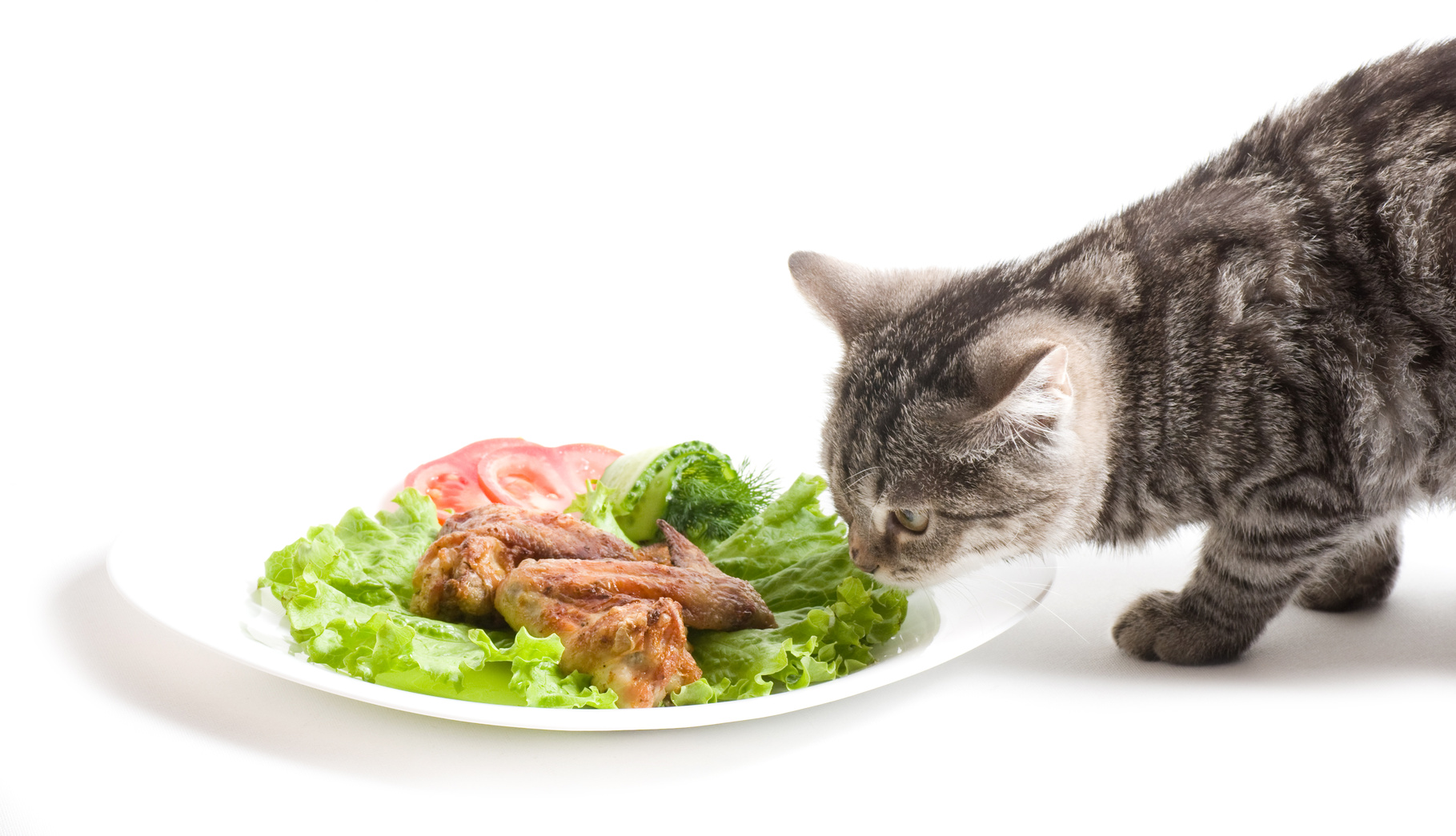Part 1 of this article identified the different types and market segments of cat food. We defined the best food for your cat as one that closely mimics their natural prey in composition.
This means a minimally processed food already containing the moisture your cat needs, made with ingredients appropriate for an obligate carnivore in the right mix of protein (high), fat (moderate), and carbohydrates (low).
This typically means a raw, homemade, or canned food with a shortlist of ingredients that don't contain grain and few (or no) starches, where meat provides the protein.
Comparison of Commercial Cat Foods
When comparing cat foods, it will help to know the composition of a cat’s natural diet.
Thanks to recent studies, we know that diet has an approximate 72 – 78 percent moisture content: the macronutrient contents (protein, fat, carbohydrates) on a dry matter basis are 63 percent protein, 23 percent fat, and 2.8 percent carbohydrates.
|
Dry Food |
Canned Food |
Raw Food |
|
| Moisture Content |
6% - 10% |
65% - 75% |
70% -75% |
| Carbohydrate Content |
20% - 40% |
15% - 30% |
Less than 5% |
| Easy to serve |
Yes |
Yes |
Yes |
| Long “shelf” life |
Yes |
Yes, when unopened |
Yes |
| Processing |
Extremely processed |
Highly processed |
Minimally processed |
Dry Food
This food comes in the form of kibbles in various shapes, colors, and flavors.
Dry food Ingredients cost less than other forms of cat foods, so almost all dry foods are cheaper than other food options. Dry food has the following characteristics:
Processing and Ingredients
- Extremely high heat processed
- Manufacturers typically make it from dried rendered ingredients that undergo extreme high-heat processing.
- Requires some form of filler to hold it together, usually resulting in a high carbohydrate content
- More likely than other forms of food to contain non-meat sources of protein
- Often uses more fillers than other forms of cat food (combined with the typically higher carbohydrate content results in bulkier stools)
Health Implications
- Addictive - It is sprayed with “palatability” enhancers (fats) that often make it very addictive to cats (If for medical or health reasons you decide to switch to another form of food, it can be difficult to transition a dry food-addicted cat.)
- Dehydrating - Cats did not evolve with a “thirst drive.” It can be difficult to encourage your cat to drink enough water. It is now well known that cats that do not consume an ample amount of water may develop urinary health problems. Chronic dehydration is associated with the development of kidney disease, the leading cause of death in cats; it is also associated with the development of megacolon. Mild chronic dehydration has been shown to reduce energy and speed up the aging process.
SIGN UP FOR THECATSITE'S EMAIL UPDATES >
What is an “ample” amount of water?
The majority of dry foods recommend feeding an amount that weighs between 2 and 3 ounces daily.
Thus a cat eating dry food would need to drink up to 8 ounces of water (one cup) each day to equal the moisture content of a cat eating canned food.
Dry food will provide your cat with the nutrition she needs, and if that’s what you can afford, please see Tips to Increase Your Cat’s Water Intake.
But dry food is not the optimum choice for your cat’s health. For those that have trouble affording inexpensive canned foods, dry food can be used as a supplement to a wet food diet to lower cost.
But above all, feeding a dry food-only diet is a choice to meet either our budget or our lifestyle.
For more information on dry food, check out this post: Does Dry Food Actually Clean Your Cat’s Teeth?
Canned or Pouch Wet Food
This type is processed moist food that comes in a great variety of flavors, textures, and shapes.
Whether pate-style, chunks and gravy, stew or shredded, wet cat foods are typically about 70 percent moisture. Pate style foods usually contain lower levels of carbohydrates than foods with gravies.
Advantages of Wet Food
- Wet food is only “cooked” once, so is subject to less heat and processing than kibble, thus it retains more of its natural nutrition.
- No starches or fillers are required as binders, so wet foods usually do not contain the same high level of carbohydrates found in most dry cat food.
- Canned foods typically do not include rendered products (other than fat in some instances), so they often include higher quality ingredients than dry.
- The high water content means your cat has a greater intake of water; this helps prevent bladder and urinary tract problems. (Just as it is recommended that people drink plenty of water to “lubricate” their entire systems, cats need plenty of water to keep all of their organs working properly).
Disadvantages of Wet Food
- Once you open the can, the food must be refrigerated or removed from the can and frozen to keep it fresh.
- If you leave it outside for more than half an hour (time may vary according to room temperature), it might go bad and give your cat an upset tummy instead of a good meal.
- Because the cost of the food includes the water content, it costs more to feed wet food than most dry foods.
Tip: A simple way to warm up refrigerated wet food is to mix in some hot water and stir well.
Some cats do not like refrigerated left-overs, even if warmed. Canned leftovers can be frozen in meal-sized portions: the food remains fresh, and can quickly be brought to room temperature by placing the frozen bag in lukewarm water prior to feeding.
Commercial Frozen & Freeze-Dried Raw
Take it as it sounds: minimally processed cat food fed uncooked, just as cats would not cook prey caught in the wild.
Raw food comes in a variety of packaging options: tubs, sausage-like tubes called “chubs,” patties, medallions, and nuggets.
Some include fresh ground bone; others use bone meal or an alternate source of calcium. Some are treated with High-Pressure Processing to kill pathogenic bacteria.
If frozen, it needs to be thawed prior to feeding. If freeze-dried, just add water and serve!
As with other commercial cat food options, it comes in a variety of proteins. Many are complete and balanced; some are intended to be used in rotation or as supplemental feeding.
Advantages of Raw Food
- Minimally processed
- Provides nutrients in a more natural form and from a more natural source
- Highly bioavailable. Raw feeders report greatly reduced stool volume and odor
- Raw feeders report that cats eat less when on a raw diet. The quantity of food needed ranges from 10% - 30% less than when feeding canned.
- Raw food if purchased without shipping can cost less to feed than premium canned foods because of the lower quantity of food required to maintain the kitty’s ideal weight.
- High moisture content.
Disadvantages of Raw Food
- Food must be thawed prior to feeding.
- As with canned, the food should not be left out for the kitty to snack on
Which specific type is better for my cat – standard grocery brand, premium, super-premium: natural, holistic, or “human grade”?
In the U.S. to date, there are no formal regulations that define objective criteria for different market segments of cat food other than “organic.”
All terms other than organic are commercial slogans. The terms such as premium, ultra-premium, natural, holistic, or human-grade have no official definition.
The exception is organic cat food. Organic products must meet the same USDA regulations as organic human food.
Which age group does my cat belong to - growth, maintenance, or senior?
Research indicates that growing kittens and gestating females have different nutritional needs than adult cats and our senior pets. In the wild, nature does not make “life stage” distinctions.
It is possible to formulate a cat food to meet the needs of every “category,” and many cat foods today are manufactured to be appropriate for “All Life Stages.”
Most cat food packages display an indication of the intended life stage. If not, they designate it for All Life Stages.
Growth
Manufacturers design food labeled as "growth" or "kittens" for weaned or semi-weaned kittens in their first year of life. They also recommend it for pregnant and lactating females.
Senior
The label "senior" or "mature" indicates food for the older and less active cat.
As research discovers more about the special needs of our cats nutritionally, “Senior” diets should be classified as controversial at this point.
“Senior” cat foods often target lower protein levels (among other things), which can lead to muscle wasting, a common problem in senior cats.
Maintenance
This cat food is the basic diet for any healthy cat that does not belong to any of the previous categories.
Any special needs I should consider?
Cats with special health problems often need specialty foods. It is best to follow your vet's advice regarding specific health conditions and feed your cat accordingly.
Many veterinary clinics exclusively offer some of these special foods. Shops do not sell them.
Many special diet foods feature unsatisfactory ingredient lists. You might want to collaborate with a feline nutritionist to tailor a diet specifically for your cat's needs.
For the basics of what's healthy for your cat, review Part 1 of this article.
SIGN UP FOR THECATSITE'S EMAIL UPDATES >
Written by Laurie Goldstein
Laurie Goldstein is a CFA Charterholder. In addition to her work as an equity analyst, she applies her research skill to all things cat, focusing on nutrition and advocacy for feral cat management via trap-neuter-return (TNR) and educational research on cat predation. Learn more about feral cats on her website Stray Pet Advocacy.
Comments? Leave them using the comment section below. Questions? Please use the cat forums for those!
Note: We may get commissions for purchases made through links on this page.




10 comments on “Choosing The Right Food For Your Cat – Part 2”